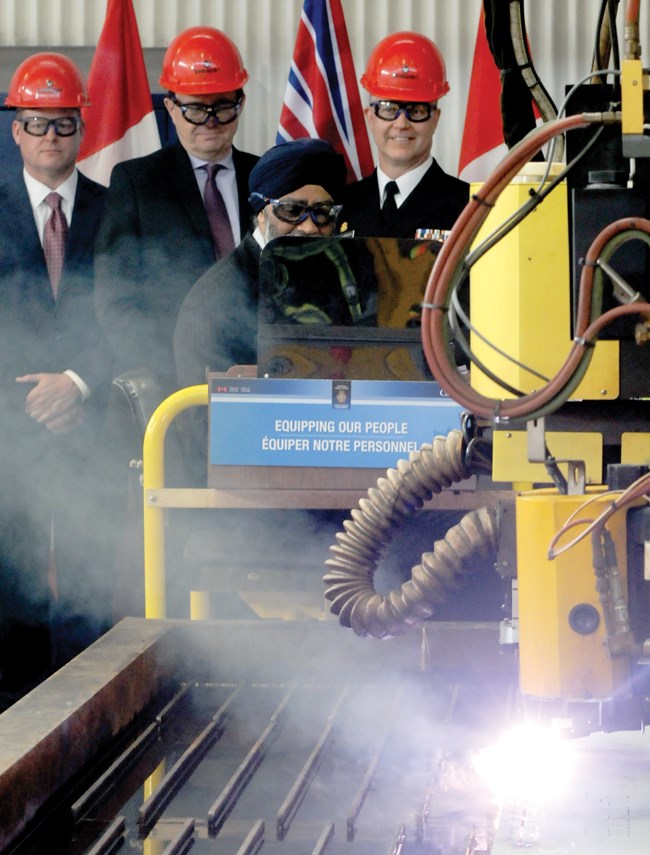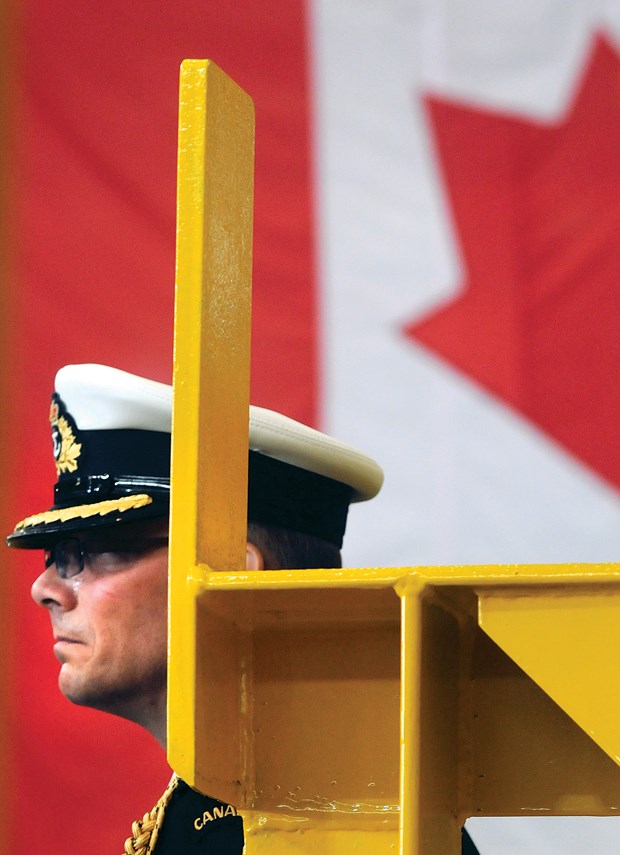Defence Minister Harjit Sajjan took part in cutting some of the first steel for Canada’s joint support ships with a plasma cutter at Seaspan shipyards Friday while announcing the official start to the project.
Friday’s ceremony marked the start of a $66.6-million contract Seaspan signed with the federal government at the end of May that will allow the North Vancouver shipyard to start construction on early blocks for the navy’s joint support ships ahead of an oceanographic vessel.
Under the agreement, Seaspan will start work this month on cutting steel and fabricating initial sections for two Protecteur-class Navy supply ships.
That work is expected to continue at the shipyard for the next year.
Seaspan and the federal government have not yet signed a full construction contract for the joint support ships.
But the defence department recently released a revised budget for the project, putting the cost of the two ships at approximately $3.4 billion.
The previous $2.3-billion budget – put out a decade ago by the previous government – had been widely criticized as inadequate.

One reason the budget has gone up is it includes work needed for completion of the ships that wasn’t included in the previous budget, said defence department spokesman Dan Bouin. The cost of some materials has increased in the decade since the budget was first drawn up, he added. In addition, costs of some components of the ships that must be ordered years in advance, like boilers and diesel engine parts, are now known, said Bouin.
Between 60 and 66 per cent of the $3.4-billion budget is expected to be spent on actual ship construction, said Bouin.
On Friday, Sajjan said following the “thorough review” of the joint support ship budget “we can put greater confidence” in the new figures.
Sajjan said he also has greater confidence in the estimated timelines for delivery of the naval support ships. The first ship is now scheduled for delivery in late 2022 or early 2023, while the second ship is expected to be completed a year later.
Sajjan told the crowd gathered at Seaspan that the investment in Canada’s naval ships is “long overdue.”

Ironically, given the United States’ current trade war with Canada under the Trump administration, Sajjan noted the steel being cut for the ships on Friday was from the U.S.
Sajjan said it’s too early to say if cross-border tariffs would have an impact on the project or its budget. “We need to make sure we build ships within a budget. We need to do it in an efficient manner that’s cost-effective to our taxpayers,” he said. “We do have options.”
At the peak of construction, the joint support ships are expected to provide jobs for about 1,000 trades workers and 300 office staff at Seaspan.
There are currently about 500 tradespeople working in the North Vancouver shipyard.
Work is continuing in the yard on the two remaining federal fisheries vessels while steel cutting and welding on the naval supply ships begins.
When built, the joint support ships, which will be named Protecteur and Preserver, after the ships they replaced, will be among the largest ships ever built on the West Coast at 173 metres long and with a displacement of 20,000 tonnes. The ships are expected to have 30-year life cycle.
The navy has been without a permanent support ship since 2015, when it was forced to retire its existing vessels because of fire and corrosion issues. It is currently leasing a temporary ship, the MV Asterix.



